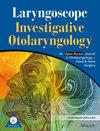Disparities in Hearing Aid Use Among Those With Hearing Loss in Rural and Urban Settings
Abstract
Objective
To investigate potential disparities in hearing aid use among urban and rural populations with hearing loss.
Study Design
Cross-sectional analysis.
Methods
We used pooled data from the 2017 and 2018 rounds of the Medicare Current Beneficiary Survey (MCBS). Our analytic sample was restricted to 8107 participants with hearing loss (those who reported little to a lot of trouble hearing) and with a full set of covariates. Multivariate logistic regression models for the probability of hearing aid use were estimated using a participant's place of residence (rural/urban) and household income relative to the Federal Poverty Level (low and middle income ≤ 200% of Federal Poverty Level (FPL); high income > 200% FPL) as main exposures.
Results
In models using place of residence as the main exposure, we found no statistically significant difference in hearing aid use between rural and urban populations. In models combining place of residence with income, we found that respondents in the rural high-income group were at the highest odds for hearing aid use (odds ratio (OR): 1.99, 95% confidence interval (CI): 1.52–2.59) when compared to the rural low and middle-income group and, similarly, for the urban high-income (OR: 1.57, 95% CI: 1.26–1.96) and urban low and middle-income groups (OR: 1.31, 95% CI: 1.02–1.69).
Conclusions
There are potential interactions of metro status and income regarding hearing aid use that are more pronounced in rural populations. This might allow policymakers to target interventions for hearing loss to rural and low-income populations.
Level of Evidence
3


 求助内容:
求助内容: 应助结果提醒方式:
应助结果提醒方式:


